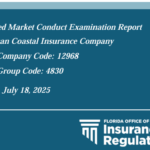As capital accumulates on insurers’ balance sheets, carriers are figuring out what to do with it if anything at all.
The industry is flush with cash after a long hard market and lower corporate bond defaults. Although insurers are wary of making acquisitions, pressure to grow revenues makes it likely that insurers will make more deals in the next three years than in the past five.
However, many industry observers worry that with so much money generating such little return, carriers also will be tempted to discount product offerings to build market share. Such conditions helped result in the last soft market.
Stock buybacks and higher dividends will be popular ways to spend, as well as expansion into new product lines and geographic territories. In addition, money may flow into areas once considered unpalatable, like directors and officers liability insurance, terrorism coverage, and excess casualty.
In both life and property/casualty, more will be spent “truing” reserves, as insurers placate rating agencies and prepare for future claims.
But even with all the alternatives, it’s possible that “good capital may lie dormant,” said Aaron Halpert, an audit principal in KPMG’s insurance practice.
Even Warren Buffet, whose Berkshire Hathaway holding company owns several core insurance businesses, said in his most recent letter to shareholders the company was sitting on $43 billion of cash equivalents “earning paltry returns,” which was “not a happy position.”
At the end of September 2004, the U.S. P/C industry had a total surplus of $376 billion, according to Adam Klauber, a managing director at Cochran, Caronia & Co., a Chicago investment bank that specializes in insurance. The increase represents a 29 percent gain since 2002.
On the life side, rating agency A.M. Best estimates that total capital and surplus for life and health companies equaled $254.2 billion in 2004, a 25 percent jump over the last five years.
The increases resulted from a combination of factors. Life insurers took a big hit five years ago as returns in the equity markets stalled. At the same time, insurance companies had multi-million dollar investments in the corporate debt of such companies as WorldCom and Enron.
Now, with bond defaults at record lows, insurers are seeing capital pile up. P/C carriers have accumulated capital after a four-year hard market in which customers paid hefty price increases.
The insurance industry is at a crucial point. During the last soft market, which started in 1987 and ended in 2001, cash piled up from gains in the equity markets. Carriers used the excess to undercut competitors, and the industry spiraled into a prolonged period of underpricing.
While acquisitions are a glamorous way to allocate capital, the track record for such deals is less than stellar. “Insurers are wary of buying other insurers because of the unknown risks they might own,” said Robert Hartwig, chief economist of the Insurance Information Institute. “These acquisitions don’t generally add to shareholder value. They are very difficult to carry off profitably.”
Many rating agencies would rather see insurers increase dividends and buy back shares than rush into a deal. While hardly attention-grabbing, such moves are “certainly preferable to underpricing business and [consummating] ill-advised acquisitions,” said Don Thorpe, an analyst at Fitch Ratings.
Meanwhile, insurers are answering the siren call of Asia. AIG has made a big investment in China, while The Hartford has moved into Japan. David Johnson, chief financial officer of The Hartford Financial Services Group, told investors last month that the company’s Japanese operation will consume $100 million of capital this year, a “high-quality problem” because of Japan’s growth opportunities.
Domestically, auto insurers may spend millions to expand into new states. Life insurers are aggressively selling products that combine equity participation with downside protection, such as equity-indexed annuities and universal life policies with secondary guarantees, that demand greater reserves.
Determining adequate reserves remains a point of contention, as rating agencies want higher reserves than insurers. Karen Horvath, a vice president at A.M. Best, acknowledges that reserving is an art rather than a science, even though technology has dramatically improved modeling over the past decade. She said the U.S. property/casualty industry is currently under-reserved by $59 billion.
Because Horvath’s view is widely held elsewhere, at least some of the increase in capital will go to truing insurers’ reserves.
Cochran, Caronia’s Klauber said that for every dollar of written premium, carriers have 83 cents in capital today, compared to 77 cents in 2002. Part of the gain is sure to go into reserves, he said.
Article reprinted with permission from KPMG’s Insurance Insider. Copyright 2005 KPMG LLP. All rights reserved. Disclaimer from KPMG: All information provided is of a general nature and is not intended to address the circumstances of any particular individual or entity.
Topics Carriers Market Property Casualty
Was this article valuable?
Here are more articles you may enjoy.


 AccuWeather: Warm Gulf Water Could Fuel Storm Intensification in September
AccuWeather: Warm Gulf Water Could Fuel Storm Intensification in September  US Property Insurance Costs Hit New High as Disasters Worsen
US Property Insurance Costs Hit New High as Disasters Worsen  South Dakota Father and Son to Pay $4M in Crop Insurance Fraud Case
South Dakota Father and Son to Pay $4M in Crop Insurance Fraud Case  Florida OIR Fines Carriers for Adjuster Appointments, Lack of Disclosure Statements
Florida OIR Fines Carriers for Adjuster Appointments, Lack of Disclosure Statements 


